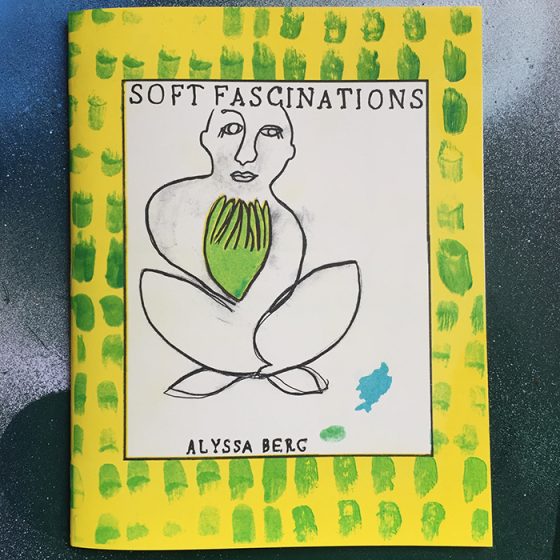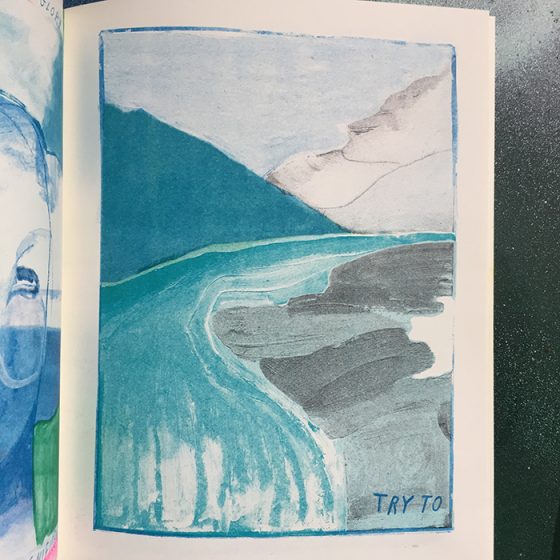Caleb Orecchio here with another gorgeous book by Alyssa Berg
—————————————————————————————————


Alyssa Berg’s Soft Fascinations is yet another worthy addition to her steadily growing repertoire of comics and pictures. Her hybrid technique of manually engineering paintings to riso printed books is something I am astonished by. The results speak for themselves.
I have no hesitation calling Alyssa’s work “poetry comics.” She is among the few worthy of such designation (maybe “art comics” is more apt, but I like to think that the art comics “movement” went out when PictureBox closed its doors). Alyssa’s work is rhythmic, seldom straying from a gridded structure that gives her sequencing meter, and at the service of portraying beautiful things. I think I can count on one hand the number of cartoonists who attempt and succeed at portraying true beauty in pictures through comics. The rest of us are just cartoonists and humorists (nothing wrong with that obviously, I’m just trying to make some sort of delineation).
Looking at Alyssa’s comics is like looking at waves in the ocean or a campfire. There is a lullaby and/or meditation inherent in the work that brings relief from life’s turmoil. The figures and landscapes seem to omit sounds of color and bring an exhalation to my eyes and lungs. Alyssa’s work is simply pleasing to look at.
 .
.

—————————————————————————————————
*If you’ve been following along, you know I, Caleb, can’t find my comic-making materials since I’ve been moving around. Why don’t I buy new materials you ask? Because I’m cheap. That’s why. There will be more daily strips coming your way from me and others. Maybe we can get Niall Breen’s strip up on the Daily News again, and not just on Insta. Anyway, happy trails.